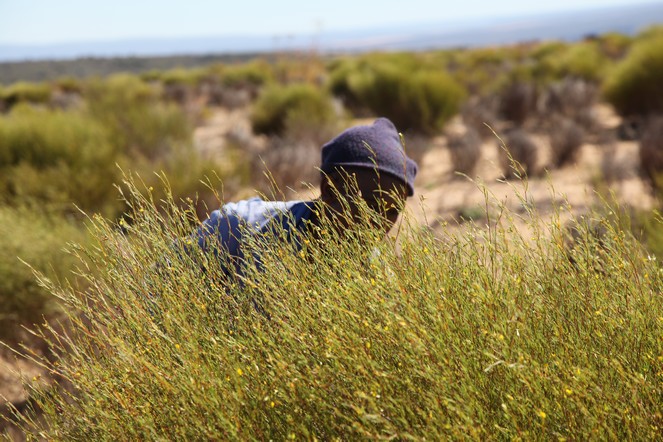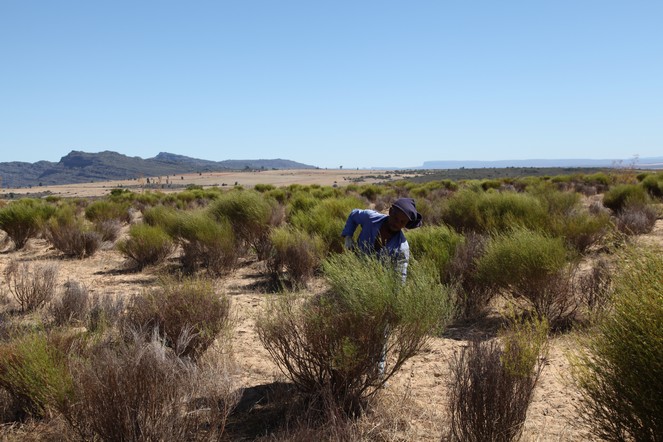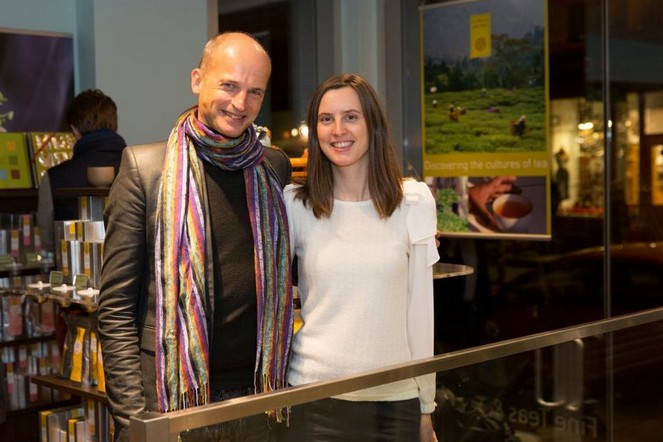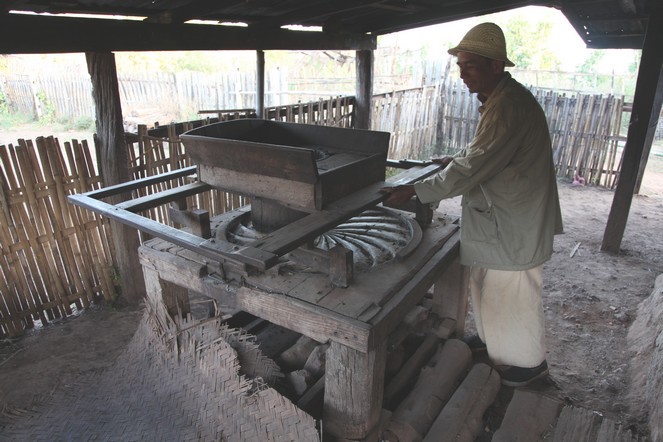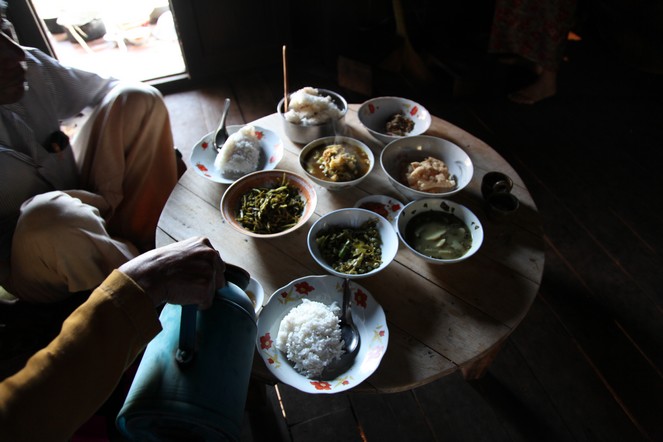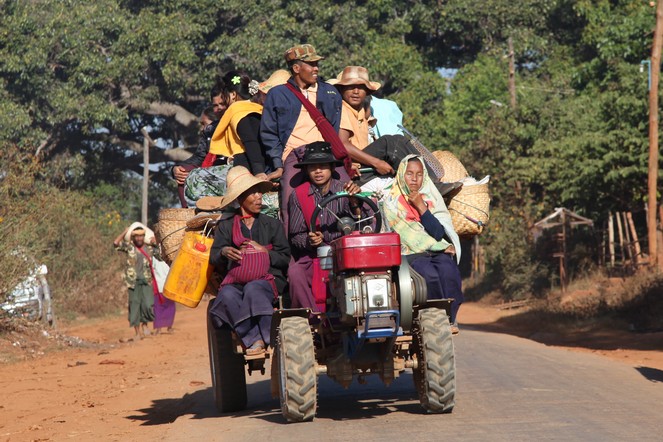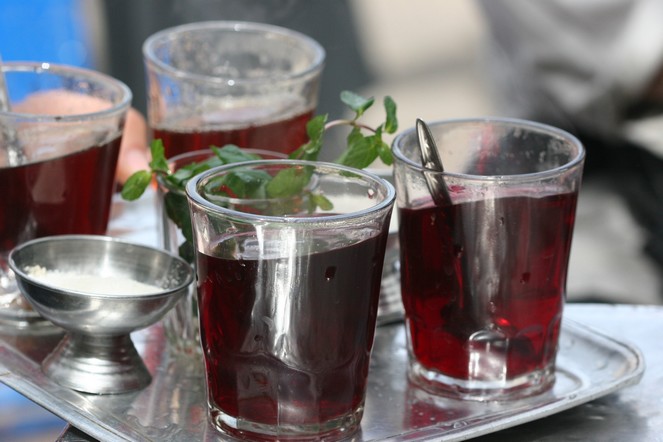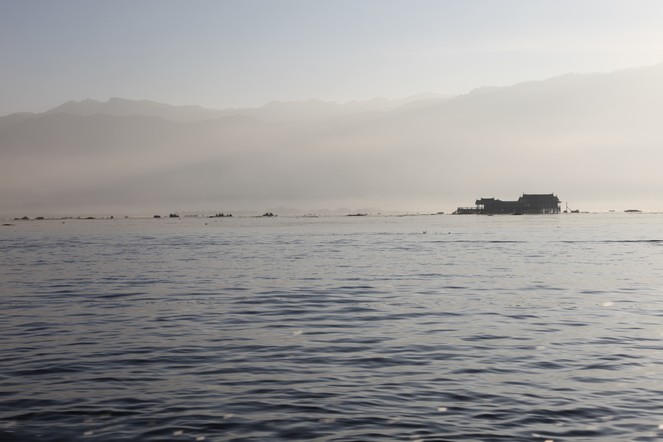The rooibos harvest has begun, and I am happy to be here. The harvest lasts less than two months. South Africa is the only country that produces rooibos, a plant sometimes known as “red tea”, but which is not a tea at all.
Rooibos is rich in antioxidants and is completely free of caffeine. It is my favourite drink before going to bed.
In a desert of stone and sand
It is only 38 degrees centigrade at the moment in this desert of stone and sand, situated three hours’ drive north-west of Cape Town (South Africa). This temperature is relatively clement, as rooibos is often harvested at around 45 degrees. The heat does not bother Aspalathus lineari, also known as rooibos. With roots that bury themselves to depths of up to four metres, the bushes seek coolness deep in the ground. I wish I could do the same!
A new Palais des Thés store opens in New York
I was lucky enough to travel to New York last week for the opening of the new Palais des Thés store in Soho (156 Prince Street). Here I am with my niece Aurélie Bessière who has been working with her husband Cy for two years to promote the Palais des Thés brand among Americans.
I was delighted to be able to meet dozens of attentive journalists throughout the course of the day. I showed them the best way to make tea, told them all about my work as a tea researcher and “tea sommelier”, and answered lots of questions. In the evening, Aurélie and I welcomed many guests.
It was a wonderful occasion and a exciting challenge now lies ahead: to encourage people to appreciate fine teas on that side of the Atlantic.
Tea, this flavoured water that does us good
I like this hand that holds a cup of tea. A simple cup of tea. I like the way the cup is an extension of the hand. The cup and hand are as one, they know each other, they are made for each other. They are joined together.
Tea is nothing more than that. Tea is nothing more than flavoured water that sustains you and does you good. It is always there for you. A simple pleasure to be savoured in every moment.
Artisanal production
In Myanmar (Burma), the production of tea remains highly artisanal. People make both green and black tea. I haven’t found anything special in my tastings so far, but I’m continuing my research.
Here, in the Hsipaw region, the main tea producing area, villagers take the plucked tea leaves home and process them in front of their houses. This is what the local rolling machines look like. They are worked by hand.
A different way of enjoying tea
In some countries, people don’t just drink tea, they eat it.
Like here, in Burma, where they ferment tea leaves in bamboo tubes before serving them drizzled with sesame oil. This dish is served as part of a meal, but it can also be offered at the end of some family and religious ceremonies.
En route for Shan State and the mountains of the Golden Triangle
My quest to unearth the world’s finest teas often finds me travelling familiar roads, whether in China, India, Japan, Nepal or Korea. However, sometimes I need to take a different route.
Exploring new areas is part of my work as a tea researcher; here I am en route to the north of Shan State and the mountains of the Golden Triangle. I’ve heard it said that the main tea producing region of Myanmar is in Namshan.
I’m ready for my adventures of discovery!
“Home-roasted” tea
This tea seller I met at Heho market keeps very busy. The whole time I was sitting beside her, customers were constantly coming and going, and she couldn’t even spare a couple of minutes to gulp down the bowl of noodles placed to one side.
She mainly sells a black tea which her customers then roast in a pan before drinking it.
This is typical of Myanmar tea: you roast your own tea at home to give it what they call the “taste of fire”. Sometimes toasted sesame seeds are added.
The different marriages of tea
I hear that there is much talk of marriage at the moment in France, and the opportunity has arisen for me to tell you what I think of it.
If there is one marriage I cannot recommend, it is tea with a slice of lemon. The effect of the acidity alters the tannins and the aromas, and the result is not particularly harmonious.
On the other hand, if we look at practices around the world, tea is open to many marriages: with mint leaves in Morocco, cardamom pods in Afghanistan, rancid yak butter in Tibet, jasmine flowers in China, a drop of milk in Britain, and with a little of all the spices in India.
Vive la différence – and vive l’harmonie!
Discovering Burmese teas
South of the beautiful Lake Innlay, so often shrouded in mist, is one of the two mountains on which the Burmese grow tea. Around Pingluang, more specifically, about 30 kilometres south of the famous lake. This is in Shan State, and it is this beautiful region
I have chosen as the destination for my first journey of the year. Myanmar is changing and is opening up to the rest of the world, and it is time to find out what kind of teas they make in this country.

